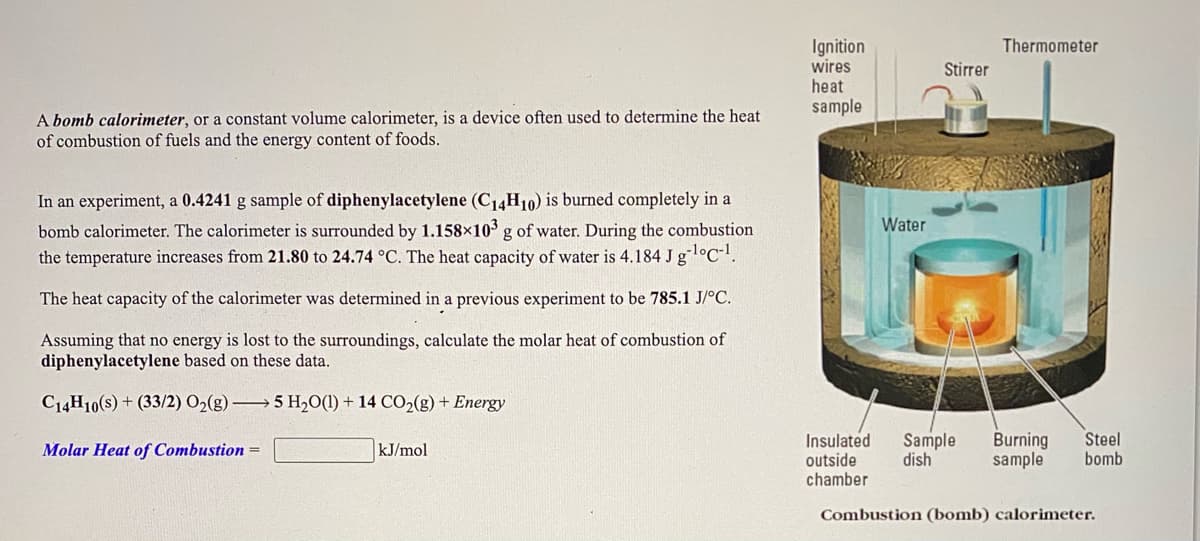Thermometer Ignition wires heat Stirrer sample A bomb calorimeter, or a constant volume calorimeter, is a device often used to determine the heat of combustion of fuels and the energy content of foods. In an experiment, a 0.4241 g sample of diphenylacetylene (C14H10) is burned completely in a bomb calorimeter. The calorimeter is surrounded by 1.158×10 g of water. During the combustion Water the temperature increases from 21.80 to 24.74 °C. The heat capacity of water is 4.184 J gl°c-!. The heat capacity of the calorimeter was determined in a previous experiment to be 785.1 J/°C. Assuming that no energy is lost to the surroundings, calculate the molar heat of combustion of diphenylacetylene based on these data. C14H10(s) + (33/2) O2(g) 5 H2O(1) + 14 CO2(g) + Energy Insulated outside chamber Sample dish Burning sample Steel bomb Molar Heat of Combustion = kJ/mol animate
Thermochemistry
Thermochemistry can be considered as a branch of thermodynamics that deals with the connections between warmth, work, and various types of energy, formed because of different synthetic and actual cycles. Thermochemistry describes the energy changes that occur as a result of reactions or chemical changes in a substance.
Exergonic Reaction
The term exergonic is derived from the Greek word in which ‘ergon’ means work and exergonic means ‘work outside’. Exergonic reactions releases work energy. Exergonic reactions are different from exothermic reactions, the one that releases only heat energy during the course of the reaction. So, exothermic reaction is one type of exergonic reaction. Exergonic reaction releases work energy in different forms like heat, light or sound. For example, a glow stick releases light making that an exergonic reaction and not an exothermic reaction since no heat is released. Even endothermic reactions at very high temperature are exergonic.

Trending now
This is a popular solution!
Step by step
Solved in 2 steps









